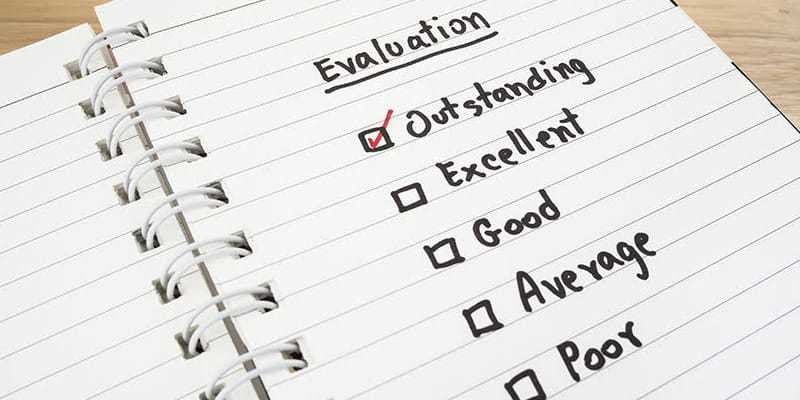Personal Accountability Model

Personal Accountability Model: this article describes the Personal Accountability Model in a practical way. After reading you will understand the basics of this powerful team development tool.
What is the Personal Accountability Model?
I suddenly had a Eureka moment! I have been allergic to performance reviews for years and the sham situations involved and I realized there was a solution for this problem. Performance reviews, all kinds of forms and the cycle surrounding these reviews are the cradle of good intentions that have not been realized.
Result: an employee who does not feel at ease, will find it difficult to tell their manager what they would really like to accomplish; it is a snapshot in time, a talk that does not give you any clues as to whether this will yield any results.
The Personal Accountability Model provides insight into what it means to be accountable. How can you contribute to your own success and that of your team as an individual? It perfectly reflects what real change brings about. It provides an answer to the question: HOW do we accomplish this? How do you do what is needed to contribute to your own success or to the success of your team, especially in difficult or tense situations? Are you aware of the Personal Accountability Model as a leader? Here you will learn how it all works and you will learn how to help and guide people towards personal accountability, for you and your team members.
The Personal Accountability Model forms the basis of the accountability movement that was started by Mark Samuel (Impaq, USA, since 1979) and, in the meantime, this model has also become successful in Latin America and Europe.
What is performance?
Performance is a mix of competencies and execution behaviour. Competencies are necessary to fulfil your task technically, execution behaviour makes you actually perform your tasks. Mark Samuel thinks that performance is equal to accountability: “Anything you do must be done to achieve the desired (team) results”.
Where do you begin?
Do you wish to abolish performance reviews? Then you will need an environment in which you can trust that everyone in the team does what needs to be done and in which people feel safe enough to speak freely with each other. I would like to explain the accountability model below, a tool that teaches you to recognize and name your and your team members’ behaviour and performance.
What do you do when things get tricky?
Any difficult or tricky situation, for example that talk in which you have to call your colleague to account for their behaviour, starts with a choice.
In this situation you can do two things;
- Display victim mentality (the bottom circle)
- Display accountable behaviour (the top circle)
Accountability is not about perfection, but about the power of recovery.
In a team it is about an environment in which mistakes can be discussed, and in which you can learn to make accountable choices in the future.
What does this accountable choice look like?
Let’s go through the top part of the Personal Accountability Model.
It starts with recognizing behaviour that does not contribute to the desired team result. This can be your own behaviour or someone else’s. This will lay the ground work for the talk and for ownership. Our feeling of ownership is often limited to our own behaviour. In an accountable team we are responsible for our entire working environment, for the barriers we encounter as a group and for our joint results. Then, it is about forgiveness. This human element is crucial! Can you forgive yourself or your colleagues for your imperfections or theirs? It is only then that you are capable of reflection and learning, so that in the future you or your team members do not make the same mistake twice and respond differently when a situation presents itself again.
Finally, the last and most important step is always: to take action. By taking action you create progress. Without action you can go through the top loop but that will not change anything. You may have noticed that intention is the key element in this model. Without a clear intention, there is no accountability. If your team does not have any idea where it sees itself in the next year, what results must be obtained and how they should work together, then making an accountable choice is impossible
What does this mean for each (self-managing) team?
The answer is quite simple, really. Just get rid of the whole performance review system and start working with a system that really works. A system in which you and your team decide what your desired team result is and what behaviour is needed to achieve this result. If one of the team members does not comply with the agreements, you can talk to them immediately. And, voilà! There’s your performance review!
It’s Your Turn
What do you think? Is the Personal Accountability Model applicable in your today’s world? Do you recognize the practical explanation or do you have more additions? What are your success factors for good personal and team performance including reviewing?
Share your comments and tips below.
More information
- Samuel, Mark (2012). Making Yourself Indispensable: The Power of Personal Accountability. Penguin Books.
- Samuel, Mark (2006). Creating the accountable Organization. Midpoint Trade books Inc.
- Original Dutch blog post: https://www.rainmengroup.com/blog/schaf-de-functioneringsgesprekken-af/
How to cite this article:
Stradmeijer, G. (2017). Personal Accountability Model. Retrieved [insert date] from Toolshero: https://www.toolshero.com/personal-development/personal-accountability-model/
Add a link to this page on your website:
<a href=”https://www.toolshero.com/personal-development/personal-accountability-model/”>Toolshero: Personal Accountability Model</a>
Published on: 08/06/2017 | Last update: 09/03/2022













